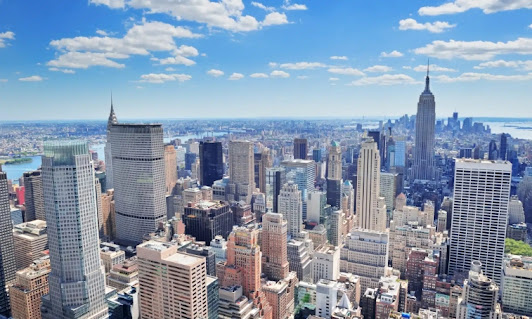Understanding Local Law 97 and its Impact in NYC
Enacted in November of
2019, the New York City Climate Mobilization Act (CMA) is an ambitious package
of legislation aimed at reaching carbon neutrality by 2050. According to the
Mayor’s Office of Sustainability, over 70% of New York City’s carbon emissions come
from buildings. With goals set to reduce carbon emissions in the city by 40% by
2030 and 80% by 2050, building emissions are critical to achieving these
levels.
Beginning in 2024,
LL97 places stringent and increasing emissions limits on most buildings over
25,000 square feet. Buildings that exceed limits face substantial fines. This
makes investments in energy efficiency retrofits and electrification the most
economical pathway in many cases.
Who is Impacted by
LL97?
If you’re a
multi-tenant building owner in the five boroughs, there’s a good chance you
are! Estimates are that 50,000 residential and commercial buildings across the
city—60% of total buildings must comply with LL97’s requirements. With some
exceptions, LL97 covers:
- Buildings that exceed 25,000 gross square
feet
- Two or more buildings on the same tax lot
that together exceed 50,000 square feet
- Two or more buildings owned by a condo
association that are governed by the same board of managers and that
together exceed 50,000 square feet
- Buildings will face annual fines of $268
per ton of emissions above the limit, with many facing multimillion-dollar
penalties.
How are Emissions
Limits Determined?
A number of factors go
into determining the greenhouse emission limit per building. These include
building usage classifications, occupancy levels and gross floor area. However,
limits will not be based on volume, but on intensity. Specifically, it will be
tons of carbon dioxide-equivalent (tCO²e) per square foot.
Guidelines for
determining and measuring emission limits were clarified last year and
information can be found on the NYC.gov website. It is however a rapidly
evolving landscape and many building owners may prefer to resort to third party
energy consultants who can do the analysis for you. This analysis once
approved will serve as a baseline against which future compliance and
reductions are measured. By 2024 all affected building owners should have
completed this analysis and had their baselines established.
What is the Law’s
Timeline?
Over time, carbon
emission requirements for buildings will go down, and fines levied will go up
for non-compliance. Emission limits begin in 2024 and become much more
stringent after 2030. It is expected that the most carbon-intensive
buildings—approximately 20% of eligible buildings—will miss the mark in this
initial period and be subject to fines that will be levied in earnest in 2024.
By 2030, maximum
emissions limits will be nearly halved with the aim of creating a 40% carbon
reduction compared to 2005 levels. Today, 75% of buildings exceed this limit.
Building owners can avail themselves of a number of strategies to minimize
fines. These include:
- Buy Carbon Credits to offset carbon
emissions but only up to 10% of your carbon.
- Convert Oil or Gas burning furnaces to
Heat Pumps
- Buy Renewable Energy credits (REC’s)
- Generally lower your fuel usage by using
energy saving measures in the boiler room. (Yes, this is certainly where we
come in…)
Heat-Timer© is
poised to help building owners take a big bite out of LL97
Energy efficiency and
electrification measures that enable buildings to reduce consumption of the
carbon-intensive fuel types are the overarching strategy for building owners
affected by LL97. For managers with existing water or steam boilers that
are not in need of replacement, Heat-Timer© provides the primary solution for
reduction of emissions. Regardless of how new or feature rich your boiler or
boilers are, the addition of an appropriate Platinum Series Internet Control
with wireless apartment sensors can save you a class leading 30% every month.
That’s a real 30% and not carefully chosen and inflated data claimed by some of
our competitors. Because our unit runs an internal wireless network for our
sensors, installation in any building is easy, and thus payback on the
installation charges typically occurs in the first or second year, depending on
how big your fuel bill is.
If you already have
a Platinum
Series Controller, make sure it has been upgraded with our internet
upgrade package. Just adding this capability can save you another 15%-20% over
the base controller while making control and monitoring on phones, tablets and
laptops a snap.
For most building
owners in NYC, Heat-Timer© Platinum series products were made to help you be a
greener building in a greener world. Call us today to find out more.
Visit us https://www.heat-timer.com/
The original blog is posted on - https://www.heat-timer.com/understanding-local-law-97-and-its-impact-in-nyc/





Comments
Post a Comment